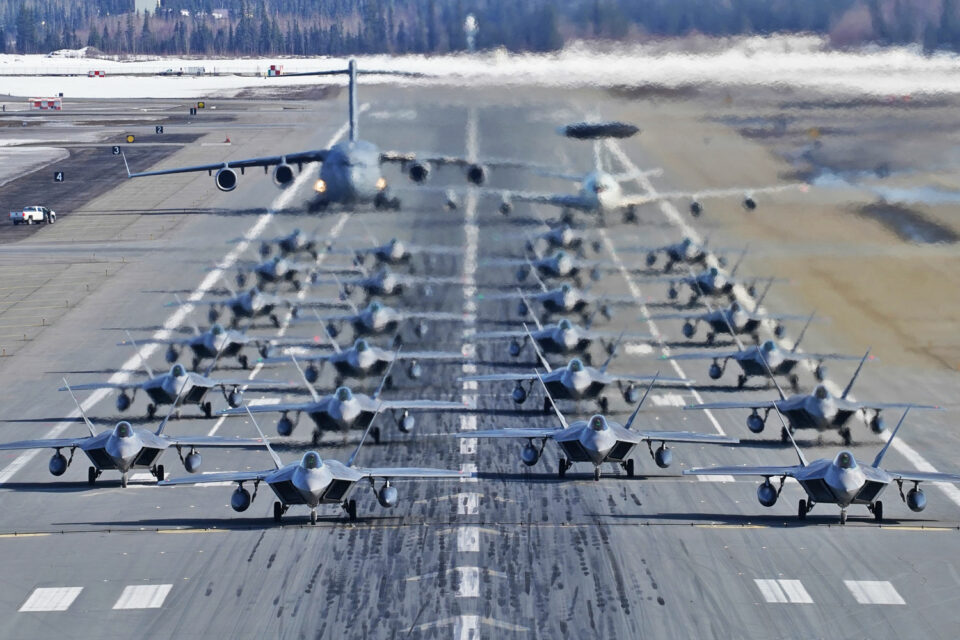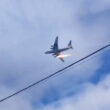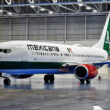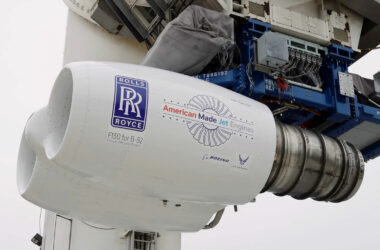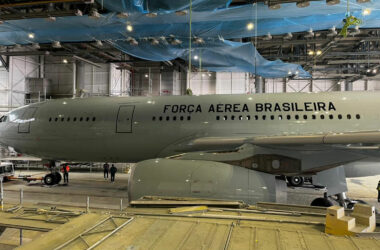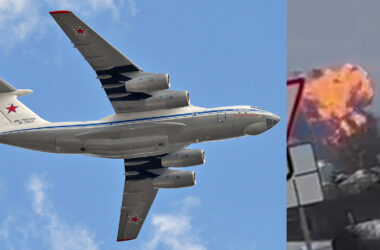The US Air Force (USAF), the largest and most powerful in the world, is expected to shrink by 2025 if the country’s Congress approves the service’s budget proposal, which foresees the deactivation of 250 aircraft.
As the total new acquisitions will be 91 planes and helicopters, the USAF fleet is expected to be below 5,000 units – according to reports, an inventory of 4,903 aircraft.
The surprising situation, occurring in the midst of growing conflicts in the world, is motivated by several factors, including funding restrictions due to a fiscal responsibility law, but also because military technology is in a transition phase.
Follow Air Data News: WhatsApp | Google News | Instagram | LinkedIn | Twitter | Facebook
For these reasons, the Air Force intends to remove from service several aircraft that would not be worth maintaining, including 32 F-22 Raptor fighters, considered the most advanced in the world.
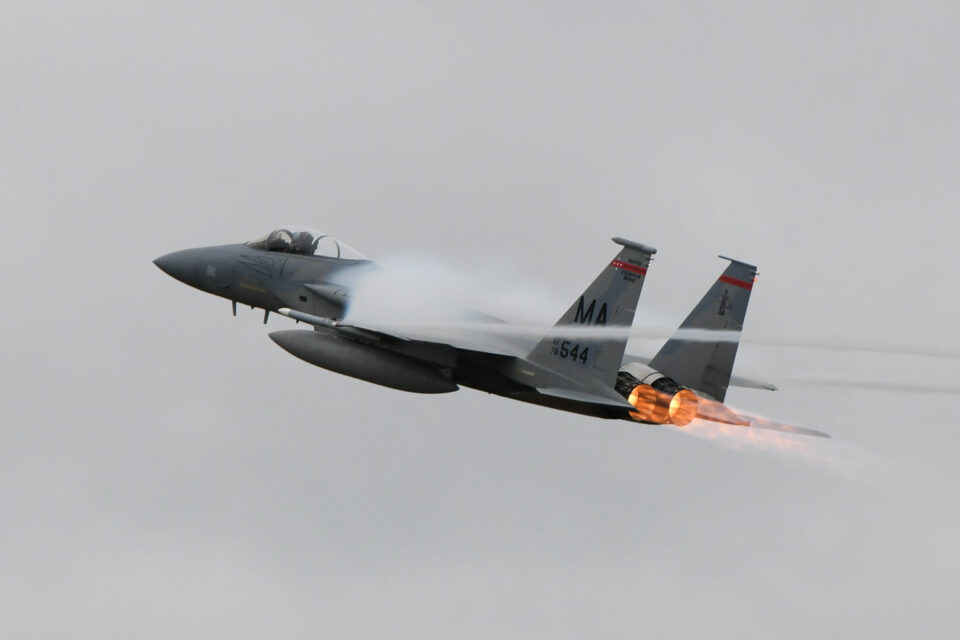
These are aircraft from the so-called Block 20, which lack the upgrades that the other 153 F-22s have, from blocks 30 and 35. The USAF has already tried to retire these jets that are used for training, however, the US Congress approved a law that remains active until at least 2028.
In addition to the Raptor, 65 older F-15C/D fighters, 26 F-15Es with PW F-100-PW-200 engines that are less powerful, 11 F-16C/D and 56 A-10 Thunderbolt attack aircraft are scheduled to go out of service.
Among the general purpose aircraft there are six C-130H and one EC-130H, one E-11 and 22 T-1 (business jets used in various missions), 16 Boeing KC-135 aerial refueling, two CV-22 tiltotor and 12 HH-60G helicopters.
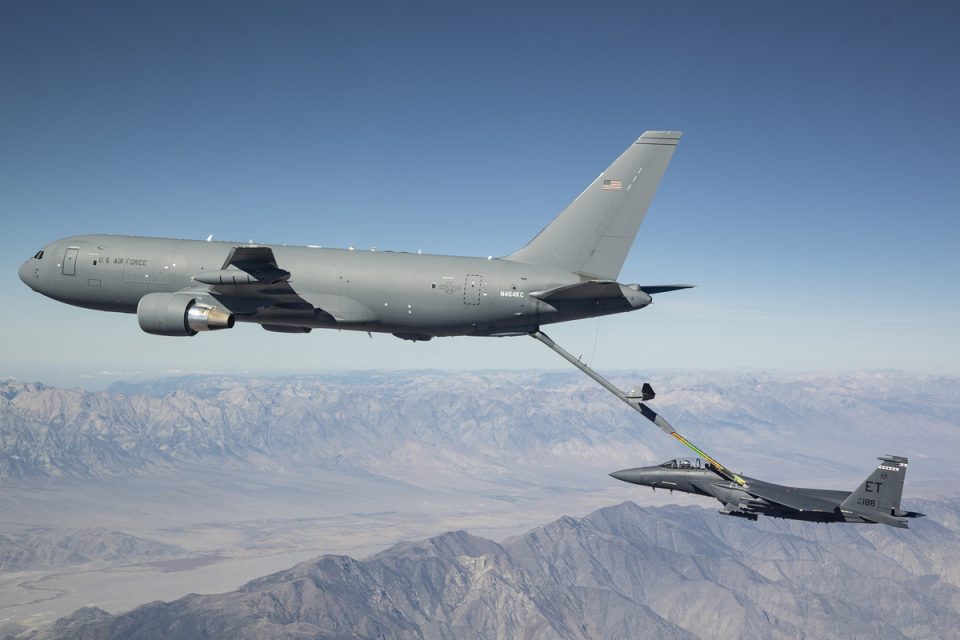
Fewer new aircraft
The resources saved by decommissioning older aircraft should be used in new programs, especially semi-autonomous aircraft.
The USAF plans to accelerate the introduction of Collaborative Combat Aircraft (CAA), which fly under the command of manned fighters and will carry out the most risky missions.
Fighter orders for 2025 include 18 F-15EX, Boeing’s new variant of the jet, and 42 Lockheed Martin F-35A. In this case, the plan is smaller than anticipated due to budget constraints and also due to the delay in the TR-3 software update.
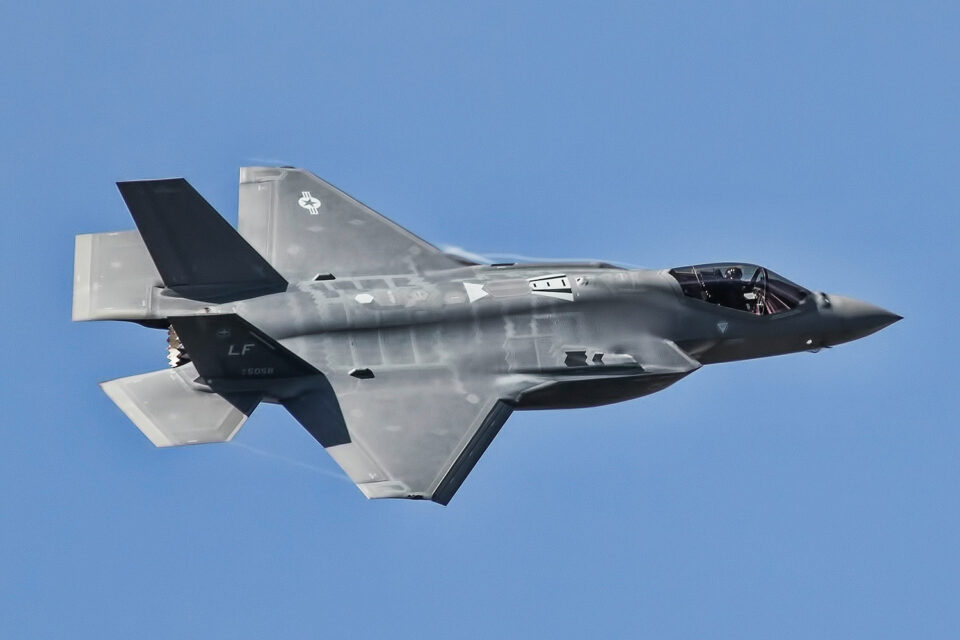
To replace the KC-135s, the Air Force intends to order 15 more KC-46s from Boeing, which is also expected to deliver the first seven T-7A Red Hawk supersonic training jets to replace the veteran T-38 Talon.
There are also six MH-139 helicopters and a C-40 jet planned.
Despite the USAF’s plan, the budget proposal will have to be voted on by US congressmen who can prevent the fleet from shrinking.


